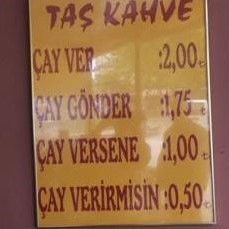Log in or register to save completed lessons.
Prerequisites for this Turkish Grammar Lesson
Continuous present tense-ıyor
Handling irregular verbs
Asking yes or no questions
-mıyor
-mıyor musun?
-mamak
-(y)a
Using -(y)a with pronouns
nereye, buraya, şuraya, oraya
What is the simple present tense (aorist) in Turkish?
The Turkish simple present tense, also known as the aorist, is a verb ending that comes in one of the following forms (depending on the verb): ‑ar, ‑er, ‑ır, ‑ir, ‑ur, ‑ür and ‑r. It is the “unmarked” or default tense in Turkish, which is why it gets called “geniş zaman” (broad tense). Accordingly, it shows up in many types of sentences where the verb is not closely tied to a specific point in time:
- assumptions and guesses about the future
- willingness to do something
- hypothetical situations
- general truths
- expressions
- proverbs
- descriptions
- habits and regular events
- telling a story
- requests, offers and indirect commands
- expressing the ability to do something
- names/titles for people and objects
Also, the Turkish aorist gets used in a variety of complex forms in combination with other verb endings. But we recommend that you learn to use the simple forms of the aorist before moving on to these complex forms.
So is the Turkish ‑ar ending present tense? Or what is it?
Of all of the ways to use the aorist, the first two uses in the list above are the most common: 1) assumptions about the future and 2) willingness to do something in the future. So the ‑ar ending is actually future tense more than it is present tense. In fact, one study shows that these two meanings account for 56% of the uses of the Turkish ‑ar ending in spoken Turkish [1]. For this reason, it is not helpful to call the ‑ar ending the “simple present tense,” as many textbooks and courses call it. But it would not be helpful to call it a future tense either: The ‑ar ending can be used for the past, present, future, or even things that will never happen! Rather, calling it the “aorist” is better because it is similar to the aorist forms in other languages like Greek, where it is a “default” tense. In other words, the Turkish aorist verb ending by itself is saying nothing at all about the time (past, present or future) that the verb happens. You have to use the context to figure that out.
How do you form the Turkish aorist?
First, find the verb stem
To use the Turkish aorist, first you need to figure out what the verb stem is. To do this, take the dictionary form of a verb and take off the ‑mak/mek ending. For example, the verb stem of “yapmak” is “yap.” The verb stem is also the same as the command form of a verb.
If the verb stem ends with a vowel, leave it.
Once you have the verb stem, if it ends with a vowel, you just add the letter “r” for the aorist ending.
Verb stem ending with vowel + r
| Dictionary form | Aorist form |
| demek (to say) | der | başlamak (to start) | başlar |
| yürümek (to walk) | yürür |
If the verb stem has one syllable, add ar/er.
Otherwise, if the verb stem is one syllable (like in “yap”), then you add an “a” or an “e” before the “r” to form the aorist ending (according to the e-type vowel harmony rules):
Verb stem with one syllable + ar/er
| Dictionary form | Aorist form |
| yapmak (to do) | yapar |
| çıkmak (to leave) | çıkar |
| gitmek (to go) | gider |
Otherwise, add ır/ir/ur/ür.
But if the verb stem is more than one syllable, add an “ı,” “i,” “u,” or “ü” before the “r” (according to the i-type vowel harmony rules).
Verb stem with multiple syllables + ır/ir/ur/ür
| Dictionary form | Aorist form |
| çalışmak (to work) | çalışır |
| gerekmek (to be necessary) | gerekir |
| düşünmek (to think) | düşünür |
But watch out for these exceptions!
There are 13 verbs in Turkish that are irregular, which means they break the normal rules for forming the aorist ending. These verbs are all very common, so you will need to pay close attention to this list. In fact, all 13 of these verbs are in the top 1000 most common Turkish words. Notice that for each of these verbs, the verb stem has only one syllable, but the aorist ending is formed with an i-type vowel instead of an e-type vowel.
Exception verbs (ordered from most common to least common)
| Dictionary form | Aorist form |
| olmak (to be, become) | olur |
| almak (to take) | alır |
| gelmek (to come) | gelir |
| vermek (to give) | verir |
| görmek (to see) | görür |
| bilmek (to know) | bilir |
| kalmak (to stay) | kalır |
| bulmak (to find) | bulur |
| durmak (to stop, stand) | durur |
| sanmak (to assume) | sanır |
| ölmek (to die) | ölür |
| varmak (to arrive) | varır |
| vurmak (to hit) | vurur |
Besides these exception verbs, there are three verbs, demek, yemek and koymak, that have passive forms with one syllable verb stems (denmek, yenmek and konmak). For these three passive stems, the aorist ending uses the i-type instead of the e-type vowel harmony despite having a single syllable in the verb stem [2].
Exception verbs in passive form
| Dictionary form | Aorist form |
| denmek (to be said) | denir |
| yenmek (to be eaten) | yenir |
| konmak (to be put) | konur |
Finally, add the personal ending
Now that you have figured out the right form of the aorist based on the verb stem, it is time to add the personal ending. The personal ending for the aorist is the same as the personal ending for the continuous present tense and for the basic “to be” sentences in Turkish. See the table below for the different personal endings for the verb “gelmek” (“to come”).
Verb stem + ar/er/ır/ir/ur/ür/r + (personal ending)
| (Ben) gelirim | I come |
| (Sen) gelirsin | You come |
| (O) gelir | He/she/it comes |
| (Biz) geliriz | We come |
| (Siz) gelirsiniz | You (plural or formal) come |
| (Onlar) gelir(ler) | They come |
As with the continuous present tense and other tenses, the pronoun at the beginning of the sentence is optional (“ben,” “sen,” “o,” “biz,” “siz,” or “onlar”). Also, the “-lar/ler” ending is optional when the pronoun “onlar” is included in the sentence.
How do you form the negative version of the Turkish aorist?
The negative form of the aorist is similar to other negative verb forms in that it involves adding a “ma” or a “me” ending before the tense, according to e-type vowel harmony rules. However, unlike with other forms, you do not include the positive version of the ending. Instead, the aorist ‑ar ending is dropped entirely for first person negative forms and it is replaced with a “z” for second and third person. Finally, the personal endings are added at the end. These personal endings are the same as for other verb forms except that the first person singular ending for the negative aorist is simply “m” instead of having an additional vowel.
Verb stem + ma/me/maz/mez + (personal ending)
| (Ben) gelmem | I do not come |
| (Sen) gelmezsin | You do not come |
| (O) gelmez | He/she/it does not come |
| (Biz) gelmeyiz | We do not come |
| (Siz) gelmezsiniz | You (plural or formal) do not come |
| (Onlar) gelmez(ler) | They do not come |
Here are 12 ways to use the Turkish aorist
1. Making assumptions
When the Turkish aorist is used with a verb in the third person (he, she, they or it), it usually means that the speaker is making an assumption or a prediction. In other words, someone who says “yapar” is saying that most likely he or she will do it, but there is not 100% certainty.
-
Examples
“Hüseyin ne zaman geliyor?”
“Birazdan gelir.”
“When is Hüseyin coming?”
“[He] should arrive soon.”
(Excerpt from a dialogue in Kırlangıç Dönümü)
Altın fiyatları yükselir mi? İşte uzmanların beklentisi…
Will the price of gold go up? Here are the expert’s expectations…
(Title of news article)
Biraz işim var, bir saat sonra gelirim.
I have some things to do, I can come an hour from now.
(Excerpt from book)
2. Expressing willingness
When a verb has the Turkish aorist is in the first person (I or we), it usually means that the speaker is making a non-binding commitment or saying that they are willing to do something. In other words, the person speaking is either saying, “I will probably do it,” or, “it would be nice to do it.” This form can sometimes be used when the speaker has made certain plans to do something: “I will do it.” However, for cases where certain plans have been made, it is more common to use the future tense: “yapacağım.”
-
Examples
Şu anda müsait değilim, ben size daha sonra dönüş yaparım.
Right now I am not available, I will follow up with you later.
(Message posted on a forum)
Belki bir gün anlatırım.
Maybe I will explain it to you some day.
(Title of a novel)
3. Hypothetical situations
Another way to use the Turkish aorist is in hypothetical situations: You can use the aorist to say that something would happen if certain conditions were true. This usage of the aorist often involves complex forms (especially forms that use the ‑sa/se “if” ending). Since these forms are harder for beginners, we do not recommend learning them until after you have mastered the aorist. But here are a few examples of hypothetical situations with commands that a beginner learner can understand.
-
Examples
Koşma, düşersin!
Don’t run, you will fall!
(A common thing for parents to say)
Sevme, pişman olursun.
Do not fall in love, you will regret it.
(Title of a song)
Bi’ dene, beğenirsin.
Just try it, you will like it.
(Quotation from forum post about cheese)
4. General truths
The Turkish aorist ending can also be used for statements or questions about what is generally true. These statements are often about things that are universally true around the world. But you can also use the aorist for generalizations about certain places or groups of people.
-
Examples
İdeal anne babalar ne yapar?
What do ideal parents do?
(Title of book)
Amerika’lılar neden bizim gibi sıcak çay içmez?
Why don’t Americans drink hot tea like us?
(Title of a section in an opinion piece)
5. Expressions
The Turkish aorist also occurs in many of the common expressions used in everyday Turkish conversations.
-
Examples
Görüşürüz.
See you later. (Literally, “We see each other.”)
Haberleşiriz.
I’ll let you know. (Literally, “We will share news“)
Teşekkür ederim.
Thank you. (Literally, “I thank.”)
Rica ederim.
You’re welcome. (Literally, “I request.”)
Affedersin.
Excuse me. (Literally, “You excuse.”)
Özür dilerim.
I’m sorry. (Literally, “I beg pardon.”)
Mutluluklar dilerim.
I wish you happiness. (Blessing for a couple getting married)
Tebrik ederim!
Congratulations! (Literally, “I congratulate.”)
Olur.
Okay. (Literally, “[It] will be.”)
Olmaz!
No way! (Literally, “[It] will not be!”)
Fark etmez.
I don’t care. (Literally, “[It] does not make [a] difference.”)
Yine bekleriz.
Come again soon. (Literally, “We expect [you] again.”
6. Proverbs
Just like the common expressions above, proverbs also normally use the aorist. Since proverbs are usually talking about things that are universally true, this section overlaps with the “general truths” section above as well.
-
Examples
Acele işe şeytan karışır.
Satan interferes with things done hastily.
Aç ayı oynamaz.
A worker deserves his wages. (Literally, “A hungry bear does not play.”)
Damlaya damlaya göl olur.
A problem is solved one step at a time. (Literally, “Drop by drop [it] becomes [a] lake.”)
Zahmetsiz rahmet olmaz.
You don’t get anything without working for it. (Literally, “There is no mercy without inconvenience.”)
7. Descriptions
When talking about the behavior of a person or group of people, you can use either the aorist or the continuous present tense ‑ıyor. There is a slight difference, however. The ‑ıyor ending is for simply talking about what they are doing. The aorist, however, often indicates that their behavior reflects something about their character.
-
Examples using the aorist to describe people
Adana’lılar güzel. İnsanlar hava sıcak diye güneşe ateş ederler, gölgede bile terlerler, bol bol bici bici yerler.
People from Adana are great. People shoot at the sun because the weather is hot, they sweat even in the shade, and they eat lots of bici bici (a corn starch dessert).
(From an Instagram post about the city of Adana)
Examples on product labels
Yüksek lif içerir
Contains high fiber
Gluten içermez
Does not contain gluten
8. Habits and regular events
In some cases, the Turkish aorist can be used for routines, habits or regularly occurring events. However, this usage has been declining in spoken Turkish in the last 50 years or so [3]. In its place, modern Turkish speakers are starting to use the continuous present tense ‑iyor ending for a recurring or habitual meaning. One place where you can still hear it often in present-day Turkish, however, is on the bus:
-
Example: discussing bus routes
“Hastaneye gider mi?”
“Evet, hastaneden geçer.”
“Does [this bus] go to the hospital?”
“Yes, [it] passes by the hospital.”
(Conversation between a bus driver and passenger)
9. Telling a story
As with the -mış ending, the Turkish aorist ending can be used throughout a short story in either the masal (“fairy tale”) or fıkra (“anecdote”) genres. In this kind of story telling, using the aorist is basically the same as using the ‑mış ending – it serves as a signal that the story is fictional. If you look over a collection of Nasrettin Hodja stories, for example, you will see that each of them uses either the aorist or the ‑mış ending in almost every sentence.
-
Example: Rüyada Gözlük Nasrettin Hoca Fıkrası
Nasrettin Hoca bir gece aniden uyanır.
– Hatun, çabuk kalk. Gözlüğüm nerede?
Kadın, uykulu uykulu,
– Hoca, gece yarısı niçin gözlük arıyorsun, der.
Hoca telaşlı telaşlı gözlüğünü takar.
– Ne demek niçin?
Tabii ki rüyada daha iyi görmek için!
Nasrettin Hodja one day suddenly wakes up.
– “Woman, wake up quickly. Where are my glasses?”
The woman wakes up, very sleepily, and says:
– “Hodja, why are you looking for your glasses in the middle of the night?”
The Hodja hurriedly puts on his glasses:
– “What do you mean why?
Of course to see better in my dreams!”
(Source: Masal Oku)
10. Requests, offers and indirect commands
When the Turkish aorist is combined with the yes/no question word “mı,” it often means that the question is either a request, an offer or an indirect command. This form is usually more polite than a direct command.
-
Examples

Çay verir misin?
Could you give [me] some tea?
(A price list for tea that changes based on how polite the customer is. Notice that the aorist is the more polite way to request tea!)
Şeker ister misin?
Would you like sugar?
(Common thing to say when serving tea)
Beni götürür müsün?
Could you take me?
(Excerpt from dialogue)
Lütfen kızımla evlenir misin?
Please, would you marry my daughter?
(Title of a play)
11. Expressing the ability to do something
In some situations, the aorist have the meaning of “ability.” That is, it can be used to show that someone is able to do something. However, the more common way of saying this is with a complex form: the ‑abil verb ending followed by the aorist.
-
Examples
Hiç uzak değil, yakınız. Her yerde müzik yaparız.
We are close, not far away at all. We can make music anywhere.
(Title of blog post)
Sizler de yaparsınız.
You all can do [it] too.
(From the title of a blog post about knitted sweaters)
12. A person or object that does something
There are a few cases in Turkish where a new word has been formed by taking the aorist form of a verb and turning it into a noun. When this happens, the resulting word is usually a name for a person or an object.
Turning a verb into a noun
| Dictionary form | Aorist form as a noun |
| yazmak (to write) | yazar (author) |
| okumak (to read) | okur (reader) |
| gitmek (to go) | gider (drain) |
Turning a verb into an adjective
| Dictionary form | Aorist form as an adjective |
| yetmek (to be enough) | yeter (enough) |
| benzemek (to resemble) | benzer (similar) |
| sevmek (to love) | macerasever (adventure-loving) |
| bilmek (to know) | bilir kişi (expert, literally “person who knows”) |
| güvenilmek (to be trusted) | güvenilir (trustworthy) |
| bölünmek (to be divided) | bölünmez (indivisible) |
| tükenmek (to exhaust) | tükenmez kalem (ball-point pen, literally “pen that does not run out”) |
| görünmek (to be seen) | görünmez (invisible) |
| geçirmek (to allow something to pass) | su geçirmez (waterproof) |
| inanılmak (to be believed) | inanılmaz (unbelievable) |
| paslanmak (to rust) | paslanmaz çelik (stainless steel) |
| taşınmak (to be moved) | taşınmaz mal (real estate, literally “immovable asset”) |
| yaramak (to be of service) | yaramaz (naughty) |
But wait, there’s more! Complex forms with the Turkish aorist
The Turkish aorist has many more uses besides the ones explained above. If you are learning about the aorist for the first time, do not try to master all of these complex forms yet. But it may be helpful for you to look over the table to see the variety of complex forms that use the aorist.
| Turkish example | English |
| Gelebilir | He/she might come / is able to come |
| Gelirse / gelir ise | If he/she comes |
| Gelirken / gelir iken | While he/she is coming |
| Girilmez | Do not enter! (Literally, [it] will not be entered) |
| Gelirdi / gelir idi | He/she used to come / would have come |
| Gelirmiş / gelir imiş | He/she apparently comes / used to come / would have come |
| Gelir oldum | I started to come regularly |
| Gelmiş olurum | I would get to come (Literally, I would become one who has come) |
| Gelecek olursam | If I were going to come |
| Yapıyor olurum | I will probably be doing |
| Dolaşıp durur | He is riding all around (Aegean accent) |
Sources
[1] Kanık, Mehmet. The Turkish Aorist and Progressive: Present Tense, Future Tense, or What? Journal of Language and Linguistic Studies, 11 (1), 103-115; 2015. Accessed June, 2020.
[2] Simple Present Tense. TurkishTeaTime.com.
[3] Underhill, R. (1976). Turkish Grammar. Cambridge, MA: The MIT Press, p. 149. (Cited by [1])
This lesson is a prerequisite for:
Without, before-madan
-madan önce
"Without," "before," and other uses
ki
Introducing quotations
Using "ki" in expressions, exclamations, and parenthetical comments
-maktansa
-mak varken
-mak yerine
-an/en/yan/yen
Handling irregular verbs
Relative clauses in place of nouns
Mangal bizim işimiz. Örnek veriyorum. Tavşan vurdum. Tavşanın normalde eti sert olur. Haşlandığı zaman sası kokar...
diye
Direct quotations
Sounds and animal noises
Introductions
Kendi as a noun
Kendi kendi as a noun
Kendi kendi with verbs
-ıp durmak
-akalmak
-ıp kalmak
-a dur
-ar olmak
-maz olmak
ise and -(y)sa/se
değilse
varsa, yoksa
-arsa, -mazsa
Using kendi with nouns
Using kendi with verbs
-ıver
-ıverdi
-acak oldu
-acak oluyor
-acak olsa
-acak olsaydı
-abilir
-amaz
-mayabilir
Vocab: "insan," "kişi"
Bazı


